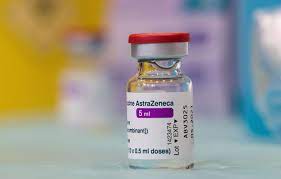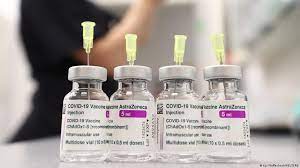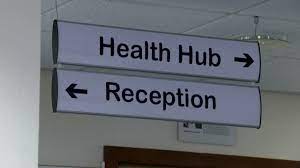Note: this is the third of three posts that have been delayed as I tried unsuccessfully to have them published elsewhere.
‘An account represents a detailed record of changes that have occurred in a particular asset during the accounting period. All these separate accounts are kept in a loose leaf binder, and the entire group of accounts is called a ledger. The ledger is a record which provides all important information.’
A ledger is needed for Australia’s vaccination program. To date it has been a muddle, but there’s plenty more to do and therefore plenty of opportunity to improve it.
The ledger must provide information to the public. This means that it must be both open and constructed and written in a language people can understand.
The asset is the vaccine, still in short supply. The business is Australia. The Board is the government. The CEO is Scott Morrison. (There is soon to be a shareholders’ meeting and the Board will be looking to the CEO to protect their reputation and their remuneration.)
Both sides of the ledger need to be considered.
Vaccine supply

Of all factors in the vaccination muddle, nothing has been more significant than the shortage of vaccine supply.
The Morrison government must show more trust in the public and take them into their confidence where vaccine supply is concerned. The public needs and deserves to see the details of expected supply of vaccine over the next 12 months and more.
What is the anticipated delivery schedule for Pfizer and Moderna? Will there possibly be others? What progress on a vaccine for under 12 year olds? Greg Hunt has said that a million doses of Moderna will arrive in Australia in late September and 10 million Moderna shots are scheduled to be delivered to Australia this year.

Just this week 1 million doses of Pfizer have been received in a swap deal with Singapore. Are more such arrangements possible?
The Federal Government may not be certain how much will be delivered from overseas or when. But the public should kept informed. The Government should inform them even when things are uncertain and, especially, when plans become unavoidably changed – when targets can’t be met. Given such information the public will feel more involved and more supportive of whatever timeline is necessary.
The supply side of the ledger is also being affected on an almost daily basis by variations in the planned period between a first and second jab. It seems extraordinary that there is no readily available chart showing the best estimates from the research community around the world of the changes in efficacy for the various vaccines consequent upon changes to the time between first and second dose.
Individuals are making decisions every day without information about changes in efficacy and the gap between the first and second. GPs have been trusted with providing decisive advice to their patients without clear knowledge of projected changes in efficacy.
Vaccine demand
One of the most egregious problems is that there has been a very undisciplined approach to the setting of priorities for vaccination and, more importantly, of action to meet them.

In January 2021 a priority ranking per population group for vaccination was agreed. The highest priority (‘1a’) was allocated to quarantine and border workers, front-line health officials, aged and disability care workers, and aged and disability care residents (emphasis added).
This order might have been forgotten but it has never been changed. How is it possible, then, that during Question Time on Monday 30 August the Prime Minister – with no sense of contrition or regret, said:
“And what we have been able to achieve this year, prior to these most recent waves hitting New South Wales, Victoria and the ACT, is that we have double-dose vaccination rates in our aged-care facilities upwards of 80 per cent. And what that has meant is that our most vulnerable in our community this year, because of the vaccines, compared to last year, and in particular the priority we placed on vaccinating those in residential aged-care facilities and ensuring that we were able to visit all of those facilities to ensure that those double-dose vaccinations were provided – that has saved hundreds (sic) and hundreds (sic sic) and hundreds of lives.”
An earlier piece on this blog has discussed the forthcoming vaccination requirements for aged care workers. Not including aged care in the home, this will apply to some 154,000 people in more than 2,700 facilities.
An analysis by the Guardian Australia, published on 25 Aug, revealed that 582 centres had vaccinated less than 50% of their workforce with a single dose, while 60 centres hade vaccinated less than 20%. (Only one in five aged care homes close to vaccinating all staff against Covid as deadline looms, Sarah Martin and Nick Evershed, Guardian, 25 Aug 2021.)

The priority order has not been discussed or changed but what has happened is that a number of other priorities have emerged and jostled with those original population groups for a place in the sun.
The process can be characterised as “The highest priorities are still not met – so let’s focus on new ones!”
With an appropriate amount of urgency, energy and innovation, it would have been possible to provide vaccinations to every patient and staff member in residential aged care in three weeks, never mind three months. What was required was an almost exclusive focus on the top priorities for a short time. Every facility could have been visited by a vaccination team, flying-squad style.
It’s the kind of logistical exercise the military are good at, as evidenced by its work after a national disaster. It would have required open, effective liaison with the facilities themselves, collaboration between State and Territory agencies, and with local government, local volunteers, the SES and local health staff. But it could have been done. It must now be done.
Instead of this blitz approach, a complicated system was devised led by private enterprise entities to deliver the vaccines. There was the occasional mention of the lack of progress, but the stronger interest shifted to other priorities, as if leaders, experts, the media and their public were bored with the old priorities and were more interested in ‘discovering’ and promoting new ones.
Decision makers and commentators have, in effect, hidden behind the phrase ‘the most vulnerable’. It has been easy to defer to this term without actually converting it into action. Now that the Delta strain has written a new script, someone has to decide on a daily basis whether to allocate the last vial of vaccine, as it were, to an elderly person, a nurse, an infant, a mobile 25-year-old, someone with a disability, an Aboriginal or Torres Strait Islander person, a year 12 student, an interstate truck driver, or a paramedic.
To this vulnerability criterion were added practical, commonsense criteria about the potential seriousness of the impact on health and other essential services of sickness and the resulting absence of members of their workforce. This is still an important consideration.
With the Delta variant, the key criteria for allocation include geographical and demographic characteristics. Where you live and what contribution you are likely to make to spread of the disease have become as important as the extent to which your health is likely to be severely affected by the condition. Some might even dare to whisper that the elderly ought to have no higher priority than young adults – the mixers and spreaders – and Aboriginal and Torres Strait Islander people.
Both sides of the vaccine ledger need to be openly discussed. Matching projected receipt of vaccine with agreed priorities will be very difficult. Some horrible options will have to be chosen.
But with an open book and full information provided to the public, there will be greater certainty about the path towards ‘full vaccination’ and unrealistic expectations can be avoided.

It will be vital that people in priority groups do not face the same frustrations and logistical difficulties that many have already experienced. If the supply schedule suggests that there will be inadequate doses for aged and disability care, for all hospital staff (now clearly a top priority), special rollout to Aboriginal and Torres Strait Islander communities, year 12 students, selected hot-spots, et cetera, then the expectations of people in those cohorts should not be raised above what can be accomplished.
The situation is serious. The following groups have already started to fill positions in the queue for vaccine or are scheduled to do so:
- all aged care staff (by 17 Sept.)
- more aged care residents (“As of August 20, 86 per cent of aged care residents and 67 per cent of NDIS participants in residential accommodation have had at least one dose of vaccine.” ABC News, Tracking Australia’s COVID vaccine rollout numbers, Digital Story Innovation Team, 2 Sep 2021.)
- in NSW: “New public health order requires staff to have their first vaccine dose by September 30. To continue working, staff must either be fully vaccinated by November 30 or have their second appointment booked.” (“The nation’s leaders should mandate COVID-19 vaccination for doctors, nurses and hospital cleaners, according to Australia’s peak medical body, with the federal government declaring the issue is ‘very high on the agenda’ of all state and territory chief health officers.” ABC News, Doctors back mandatory COVID-19 vaccination for health worker, Stephanie Dalzell, 31 Aug 2021.)
- Aboriginal and Torres Strait Islander people. (Is there a priority order? By place? Age group?)
- Teachers? “last week many teachers felt betrayed after the announcement that New South Wales teachers will need to be vaccinated as part of the ‘road map’ to getting students back in school, – “ “There was little detail to the announcement apart from it being implemented from November 9.”
- inter-State truck drivers?
- “On August 20, NSW mandated that childcare and disability support workers who live or work in a council ‘of concern’ must have received their first vaccination dose by August 30.”
- In NSW: “Authorised workers who live in an LGA of concern and need to leave it for work are only permitted to do so if their employer has implemented rapid antigen testing, or they have had their first vaccination dose by August 30.” NSW Government website, COVID-19 vaccination for workers, 1 September 2021.
- paramedics?
And let’s not forget that it has been agreed that the next cohorts will be 16-39-year-olds (from early Sept) and 12-15-year-olds from 13 September.
While ever there is a shortage it will be essential to set priorities and stick to them.
Let’s get on board with Buckley. They’re all we have.

Note: this is the third of three posts that have been delayed as I tried unsuccessfully to have them published elsewhere.
